Find out the fascinating differences between sweat bees and yellow jackets, and learn how to identify these commonly mistaken insects.
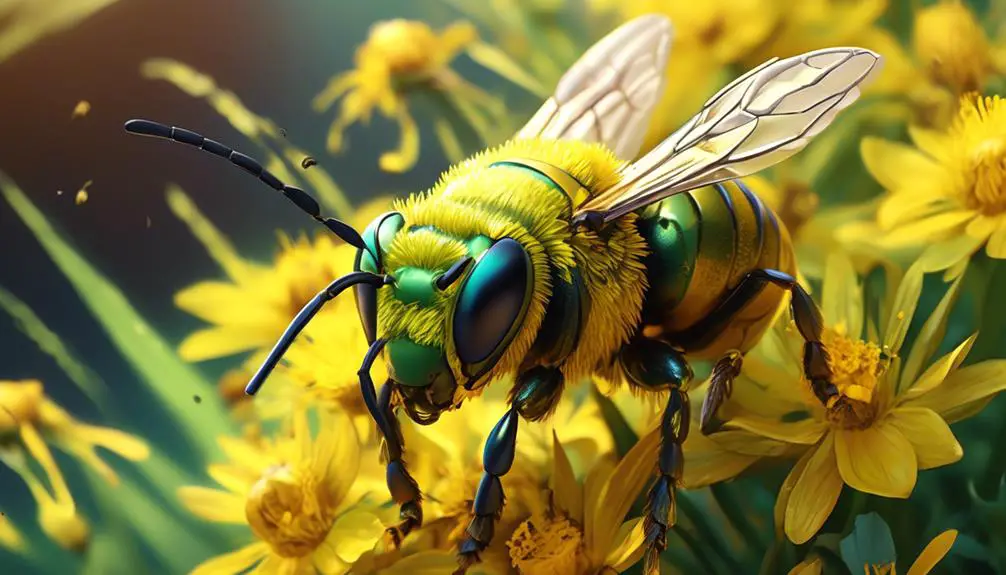
What Is the Difference Between a Sweat Bee and a Yellow Jacket
In the world of insects, it's not always as clear as black and white, and distinguishing between a sweat bee and a yellow jacket can certainly be a case of splitting hairs. You might have noticed these buzzing creatures in your backyard, but knowing which is which can be a bit of a challenge.
Both insects have their unique traits and behaviors that set them apart. Let's take a closer look at the sweat bee, often mistaken for its more aggressive cousin, the yellow jacket. We'll dive into the differences in their appearance, behavior, and habitat, setting the stage for a fascinating exploration of these two distinct species.
By the end, you'll be able to distinguish a friendly sweat bee from a potentially threatening yellow jacket at a glance. So, are you ready to take on this intriguing insect identification challenge?
Key Takeaways
- Sweat bees are small, metallic-colored bees that are non-aggressive and attracted to human sweat, while yellow jackets are larger bees with a striking yellow and black pattern that are aggressive when threatened.
- Sweat bees prefer to live in the ground or rotting wood, while yellow jackets live in large colonies and build nests underground or in trees/walls.
- Sweat bees are important pollinators and beneficial for gardens, while yellow jackets can be both beneficial and a nuisance.
- To avoid being stung by yellow jackets, it is important to avoid their nests, avoid wearing bright colors and using sweet-smelling products, and not to swat at them.
Identifying Sweat Bees

Often, you'll find sweat bees buzzing around your garden, identifiable by their small size and metallic coloring. Unlike the aggressive yellow jackets, these bees tend to keep to themselves, only stinging when provoked. Don't let their miniature size fool you; they're crucial for your garden's well-being, serving as important pollinators.
You'll see them hovering near flowers, their bodies shimmering in sunlight with an iridescent green or blue. However, not all sweat bees sport this metallic sheen. Some may display dull black, brown, or even striped patterns, making them a bit trickier to identify.
If you're still unsure, there's another clue in their name. Sweat bees are attracted to human sweat, believe it or not. They'll land on your skin on a hot summer day, lapping up the salt from your perspiration. Don't panic, though. They're not interested in stinging you, just in quenching their thirst.
Recognizing Yellow Jackets
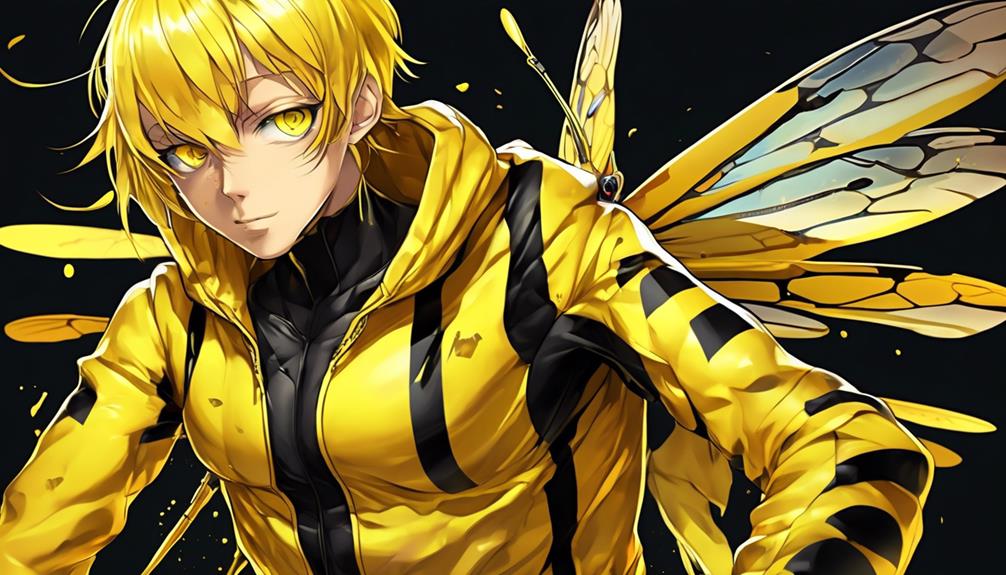
Now, while sweat bees may pique your curiosity with their unique traits, yellow jackets demand a different kind of attention. These insects aren't only larger and more aggressive, but they also boast a distinctive appearance that sets them apart. Recognizing yellow jackets is crucial to avoid painful stings and potential allergic reactions.
- Size and Shape: Yellow jackets are typically half an inch to an inch in length, with a noticeably robust and elongated body shape. They're not as petite as the tiny sweat bees.
- Color and Pattern: Look out for the striking yellow and black pattern. Yellow jackets have alternating bands on their abdomen, which is a clear visual difference from sweat bees.
- Nests: Unlike sweat bees that nest in the ground, yellow jackets often build their nests in trees, attics, or wall voids.
- Behavior: Yellow jackets are known for their aggressive behavior when threatened. They don't lose their stinger, which means they can sting repeatedly.
Sweat Bee Behavior Patterns
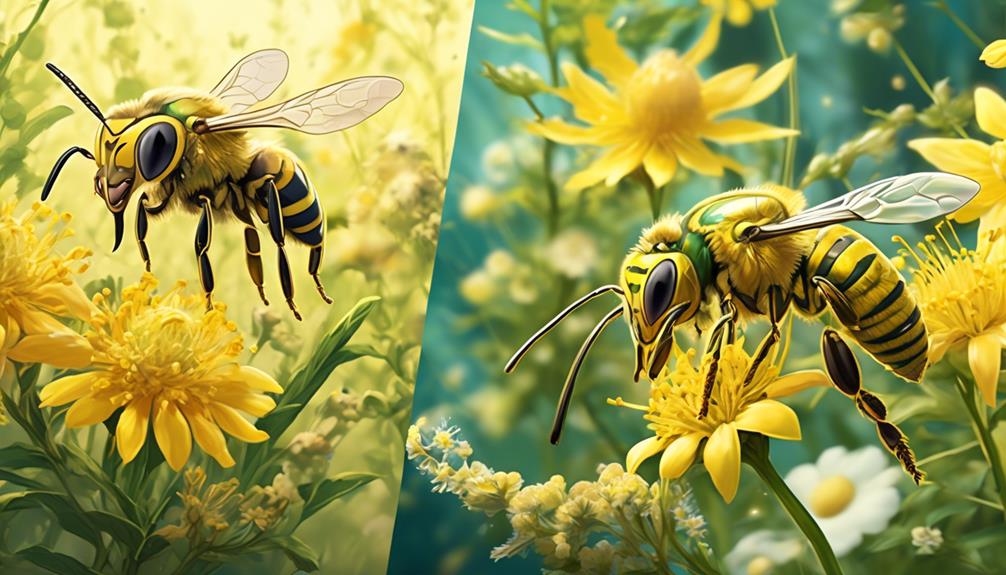
Diving into the world of sweat bees, you'll notice their behavior patterns are quite distinct and fascinating. Unlike their counterparts, the yellow jackets, sweat bees aren't aggressive. They're more docile creatures, preferring to keep to themselves unless provoked.
You'll find these bees are solitary by nature, with each female constructing her own underground nest. They don't form large colonies like other bee species. However, they're not antisocial. In times of need, they'll share their nests with other sweat bees, displaying a form of social behavior.
Sweat bees are also unique in their taste for human sweat. It might sound strange, but they're attracted to the salt in our sweat. If you're out on a hot day, don't be surprised if a sweat bee lands on your skin to lap up your perspiration.
Despite their name, sweat isn't their only food source. They play a crucial role in pollination, feasting on nectar and pollen from a variety of plants. They're particularly fond of brightly colored flowers. So, if you're a gardener, they're a great friend to have around, helping your plants thrive.
Yellow Jacket Interaction Tactics
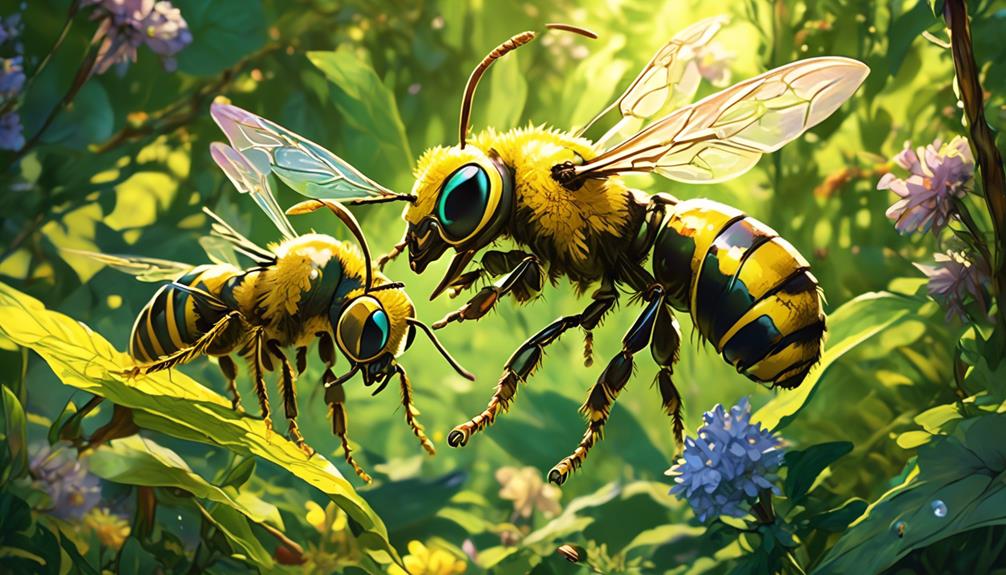
Unlike sweat bees, yellow jackets are known for their aggressive interaction tactics, especially when they feel their nests are threatened. These insects aren't just out for a picnic, they're prepared to defend their territory with gusto.
There are some key tactics you should be aware of when it comes to interacting with yellow jackets:
- Avoidance: The best way to avoid a yellow jacket sting is simple – stay clear of their nests. Yellow jackets are usually peaceable unless provoked.
- Caution: If you've noticed a nest in your yard, don't try to remove it yourself. Call a pest control professional instead.
- Attire: Yellow jackets are attracted to bright colors and sweet smells, so avoid wearing these when in their presence.
- Behavior: Don't swat at a yellow jacket. This will only make them more aggressive.
Comparing Habitats and Diets
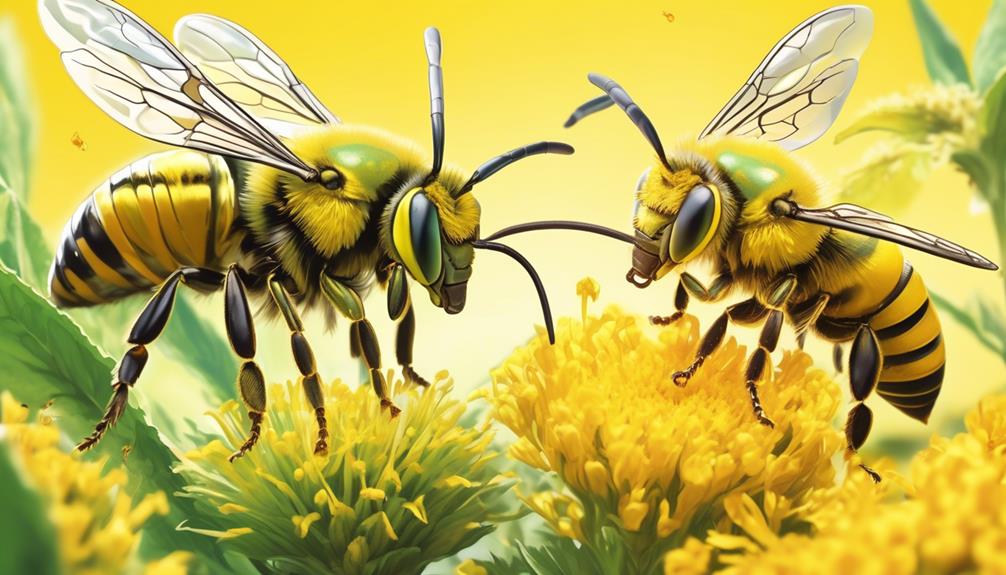
When it comes to habitats and diets, sweat bees and yellow jackets have quite a few differences you'll find interesting.
Let's start with habitats. Sweat bees are solitary creatures who prefer to live in the ground or in rotting wood. You're likely to find them in your garden, making tiny burrows in bare patches of earth.
On the other hand, yellow jackets are highly social insects who live in large colonies. They often build their nests underground, but you might also find them in hollow trees or within your home's walls.
Now, let's talk diets. Sweat bees are pollinators and mainly feed on nectar and pollen. So, they're beneficial for your garden, helping flowers to bloom.
Yellow jackets, however, have a more varied diet. They're known to eat insects, carrion, and human food waste. This makes them both a pest and a beneficial insect, as they can help control other insect populations but can also be a nuisance at outdoor events.
Conclusion
So, you see, sweat bees and yellow jackets are two very different critters.
Sweat bees are gentle, solitary beings that might buzz around you, attracted by your sweat.
Yellow jackets, on the other hand, are social, aggressive insects that won't hesitate to sting if they feel threatened.
While both share a love for flowers, their habitats and diets vary.
Knowing these differences can help you better navigate your encounters with these fascinating insects.



